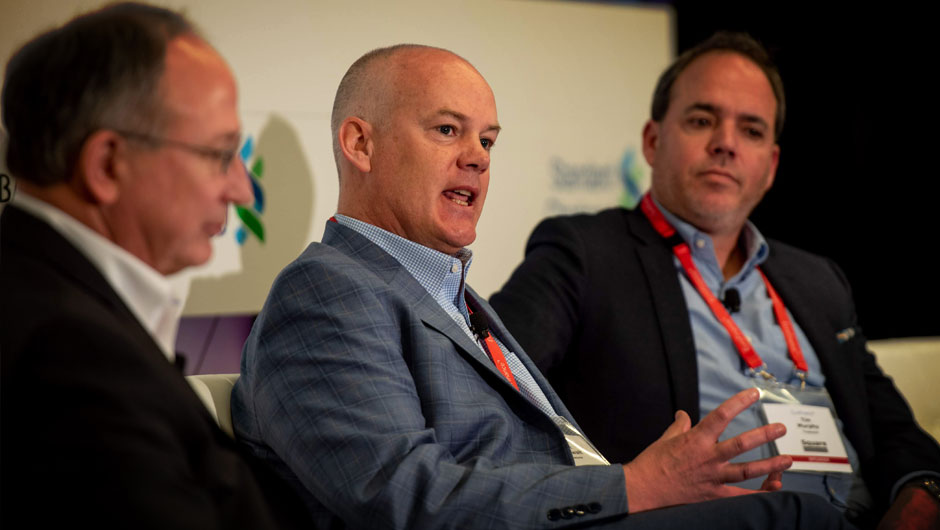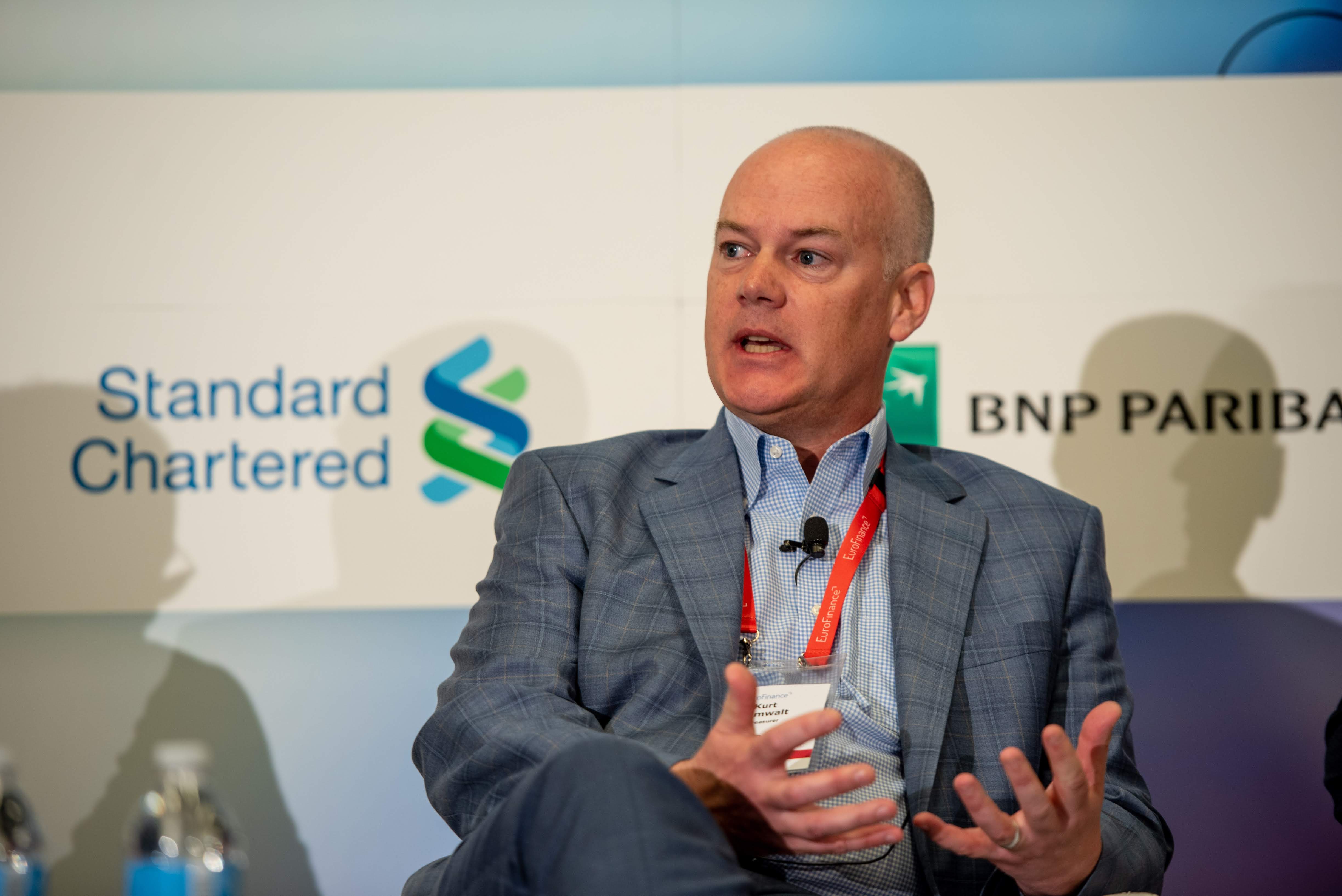Three ways in which treasurers cope with rapid growth

Treasurers at high-growth tech companies race to keep up with their disruptive businesses while outstripping partner banks.
The US west coast is home to dozens of high-growth companies, whose tech-based innovations have changed the world beyond recognition. Their treasurers face a unique challenge staying abreast of this growth, as they told delegates at the EuroFinance Managing International Growth conference in San Francisco.
1) Growth is breathtakingly fast

Kurt Zumwalt is a relative veteran in this world, having joined retail giant Amazon in 2004 and having been treasurer since 2014. “We’ve grown at about 25-30% a year, so we’re always trying to keep up with the business” he says.
“For example, Amazon Web Services (AWS) didn’t exist when I started at Amazon”, Zumwalt explains. In eight years, the annual cost of server networking equipment leases alone for AWS have jumped from $300 million to $10 billion – costs that Zumwalt has had to absorb.
“We can’t tell AWS they can’t launch in a particular availability zone because we’re not ready, or that we can’t pay bills to a vendor”, Zumwalt points out.
Privately-held home sharing company AirBnB launched in 2008 and has had 500 million stays booked through its system since then. The company aims to accept payments in any currency and offers insurance to all the hosts that use its platform. This growth is the number one challenge for treasurer Jeff Mullen.
“I think the most important disruption for us is the disruption that we’re causing as we expand and grow globally”, Mullen said. “Figuring out how we stay in front of that, being an enabler for the business”.

Payment processor Stripe was only founded in 2010, but here again a similar challenge preoccupies its treasury.
“I would echo the sentiment on growth”, says Chris Van Woeart, Stripe’s head of treasury. “Stripe is now in 26 countries and has ambitions to expand into many more over the next two years. For me it becomes a pressure point. The markets we are entering are not easy – places like Malaysia or India can present new and perhaps unique challenges”.
The growth challenge affects less well-known companies too. “We’ve been so used to downside planning after the financial crisis, but we also have to think about upside planning”, said Odette Go, Vice President and Treasurer at Silicon Valley-based semiconductor company Lam Research. “How do you cope with rapid growth?”

2) Banks had better keep up
The need to support growth affects the kinds of partnerships such companies have with banking partners. At Amazon, the first question is whether such partners can keep up.
“We try to find things that scale globally”, Zumwalt said. “If we’re looking at a treasury workstation or a partnership with a bank, we’re also talking taking into account counterparty risk. When I started at Amazon the banks wouldn’t pay any attention to us. I made a conscious decision to consolidate with three major cash management banks: one in the US, Europe and Asia. And that got their attention to innovate, and led to a deep partnership. Now that it’s gotten a bit larger and counterparty risk is a significant consideration, we’re working with more banks, but we want to keep it to 8-12 major partnerships”.
For companies that evolve from start-up to global, some bank partnerships can’t survive the transition.
“We started out working with smaller, local banks, as they typically demonstrate more willingness to work well with start-ups”, Stripe’s Van Woeart says. “But, eventually we find we cap out with that local bank as the result of our growth rates or product/market ambitions. Do they have the balance sheet to support us in three years’ time? Do we have to find another banking partner to meet our growing list of needs and opportunity sets? I spend a lot of time dealing with those sets of questions as well as core liquidity operations and risk management”.
And even if a bank partner does have the size to match the scale of rapid growth, their technology might not be able to keep up with business demands.
“Ensuring our technology aligns with our banking partners’ technology can be a challenge”, Van Woeart explains. “For example with FX, a bank asked if we wanted to get on the phone every day to solve our transactional FX needs. I said ‘No! Do you know what an API is? Partnering with legacy technology or operational approaches can actually slow you down a bit”.
Zumwalt argues that partnership banks should view the prospect of working with a high-growth company or ‘unicorn’ as a strategic learning opportunity.
“When a bank is innovating in payments or cash management, and they build something for us, I’m sure they’re going to have to invest from the banking perspective”, Zumwalt observes. “They’re most likely going to be able to sell this thing to everybody else. That’s the partnership that our key banks have with us”.
3) It gets even more complicated in emerging markets

Illiquid currencies, trapped cash, arcane tax rules and creaky payments systems – these are some of the problems that treasurers have to deal with in emerging markets. E-commerce companies that become global have to address these problems fast and efficiently.
For example, Amazon had to learn how to efficiently make small third-party seller payments in emerging markets.
“One of the more interesting things I’ve worked on at Amazon is ensure we can going into the low value clearing network for all the currencies we pay”, Zumwalt says. “We want to ensure your payment is accurate and on time. So understanding the low-value clearing network in all these countries is hyper-critical, and that comes back to partnerships with the banks”.
Technology is the reason Stripe prefers to work with global banks in emerging markets. “In EM we are trying to work strategically with global banks because it’s time consuming for our engineers to work with a lot of local banks, which require new host-to-host or API integrations”, notes Van Woeart. “But then you sometimes find that the global banks that have expanded by acquisition haven’t integrated their systems yet and have legacy issues that prevent them from offering a true, single point of integration that can be applied globally. It’s difficult to assess that until you dive into the technical work and kick off the integration”.
Christopher Van Woeart, Head of Treasury, Stripe will be speaking at: